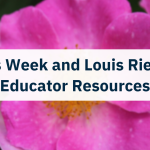Celebrating Canada’s Newest Territory: Understanding the Importance of Nunavut Day
How do you bring Nunavut Day into your classroom when students are out enjoying the summer sun? Nunavut Day, celebrated annually on July 9, marks the creation of Canada’s newest territory. In 1999, the Northwest Territories split to form Nunavut—a place where Inuit communities have the power to govern and manage their own land. Nunavut Day is the perfect chance to explore the rich history, culture, and traditions of Inuit communities. In this post, we’ll look at why Nunavut Day matters and how to bring this celebration into your classroom.
History
The process of creating Nunavut started in the late 1960s when the Inuit Tapiriit Kanatami (ITK)—then known as the Inuit Tapirisat of Canada—was created to represent the interests of Inuit communities throughout Canada. In its early years, the ITK focused on advocating for land rights and self-determination. A significant initiative was the Inuit Land Use and Occupancy Project, which documented traditional Inuit land use and occupancy and demonstrated Inuit claims to their ancestral territories.
Years of advocacy work, research, and lobbying resulted in the Government of Canada settling the Nunavut Land Claims Agreement (NLCA) in 1993. The NLCA was a major step forward for Inuit self-determination. It’s the largest Indigenous Title settlement in Canadian history and ensures Inuit communities have the tools and authority to take care of their land, wildlife, and future. Through the agreement, Inuit gained title to a huge portion of their Traditional Territory and secured a meaningful role in decision-making about natural resources and environmental stewardship. The Nunavut Government reflects Inuit values and priorities, making Nunavut a powerful example of what self-determination can look like in practice.
The other key piece of legislation was the Nunavut Act, which outlined the creation of Nunavut as a new territory with its own government and administrative structures. Although the NLCA and the Nunavut Act were adopted by the Canadian Parliament on July 9, 1993, the formal separation of Nunavut from the Northwest Territories didn’t happen until April 1, 1999. Originally, Nunavut Day was held on April 1 to celebrate the formal separation. However, the people of Nunavut felt that the adoption of the NCLA and the Nunavut Act was the true turning point, so Nunavut Day is now celebrated on July 9.
How Is Nunavut Day Celebrated?
On Nunavut Day, communities from across the territory participate in traditional games, music, dance, feasts, and storytelling, each element deeply rooted in Inuit traditions and values.
Festivities often feature traditional Inuit games that have been passed down through generations, serving both as entertainment and as a means of teaching survival skills. One of these games is nalukataq, or blanket toss. Originally a hunting technique to spot game from a height, participants are thrown into the air from a walrus or seal skin held by others. Today, it’s a festive activity symbolizing community support.
Nunavut Day gatherings are also filled with music and dance. For example, these celebrations often feature drum dancing, where rhythmic beats on a qilaut—a drum made from caribou skin stretched over a wooden frame—set the pace for dancers who move in harmony with the beat, using motion to tell stories. Equally powerful is katajjaq (Inuit throat singing), an art form typically performed by women. This unique vocal technique involves two singers who face each other, creating rhythmic sounds that mimic Arctic nature—like animal calls or the wind—through a playful yet competitive back-and-forth.
Traditional foods include seal meat, which is celebrated not only for its cultural significance but also for its vital role in sustaining life in the Arctic. Another cherished dish is muktuk, made from whale skin and blubber, often eaten raw or pickled. Arctic char, a cold-water fish, is usually enjoyed smoked or grilled, while caribou meat is often prepared as stews or roasts. These dishes offer nourishment and represent the deep relationship between Inuit and their environment.
Storytelling by Elders and Knowledge Keepers is an essential part of the day, providing a chance to share Traditional Knowledge, oral history, and life lessons that have shaped Inuit identity. Through storytelling, Elders pass on teachings that connect the past with the present, preserving cultural heritage while fostering a sense of community.
Whether through games, music, food, or storytelling, Nunavut Day is a powerful celebration of Inuit resilience, identity, and self-determination.
Bringing Nunavut Day into Your Classroom
Even though Nunavut Day happens when most students are off for the summer, you can bring the spirit of Nunavut Day into your classroom through lessons and activities that help students learn about Inuit history, culture, and traditions. Here are some ideas to get you started:
- Host Inuit speakers, Knowledge Keepers, or Elders: Organize in-person or virtual visits where Inuit guests can share their personal experiences, stories, and information about Inuit language and culture.
- Make Cross-Curricular Connections:
- Geography: Show a map of Canada and point out where Nunavut is located. Talk about Nunavut’s large area, remote communities, and unique northern climate.
- Social Studies: Discuss the events and advocacy that led to the creation of Nunavut, and talk about its significance as a land claims settlement and for the recognition of Indigenous rights.
- History: Show archival photos from the official creation of Nunavut on April 1, 1999. Invite students to choose one photo and write a short reflection or historical caption from the perspective of someone attending the ceremony. Who are they? What are they feeling?
- Science: Discuss environmental issues and examine how climate change is affecting northern areas such as Nunavut.
- Art: Help learners connect with Inuit art and culture through music, videos, art, or interviews with Inuit artists.
- Look for Symbolism: Learn about Nunavut’s flag, which features an inuksuk and the Niqirtsuituq (North Star).
- Incorporate Inuit literature: For young students, consider including culturally relevant books written by Inuit authors such as the following:
-
- Sweetest Kulu by Celina Kalluk
- Fishing with Grandma by Susan Avingaq and Maren Vsetula
Conclusion
Nunavut Day isn’t just another day on the calendar. It’s a special time to celebrate Inuit strength, culture, and history. Even though this summer celebration doesn’t coincide with the regular school year, you can still bring Inuit voices, culture, stories, and knowledge into the classroom. This school year, take some time to honour, reflect, and celebrate. Happy Nunavut Day!








